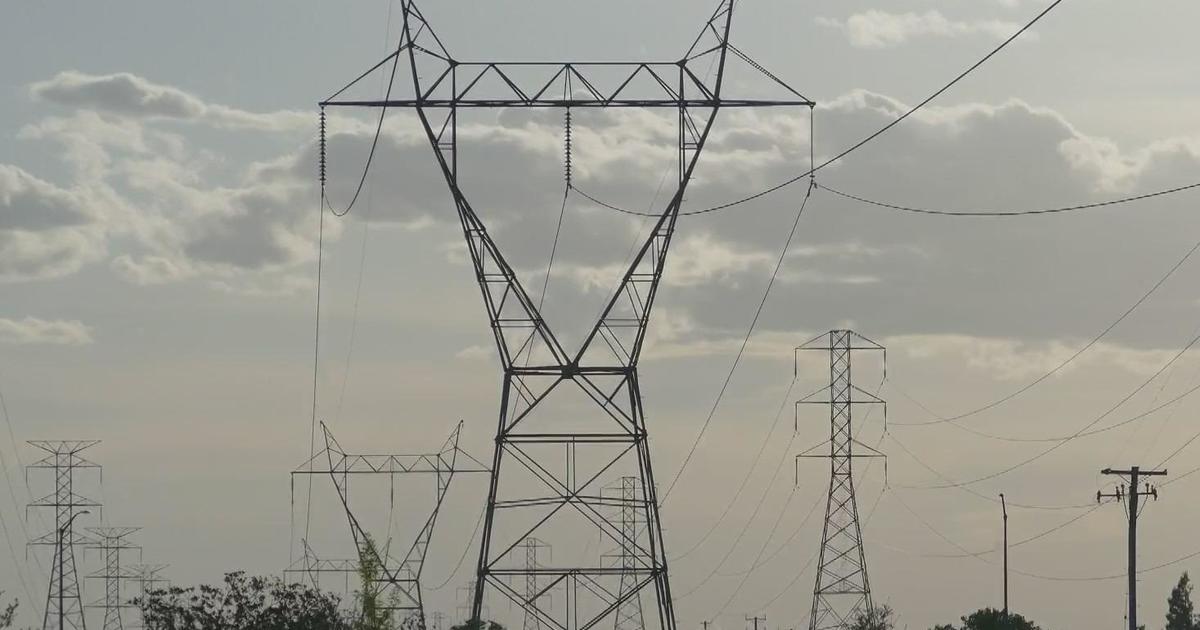You're paying rent and rehab for parolees — but California isn't tracking if your money is helping
California is spending hundreds of millions on housing and re-entry programs for former inmates – but isn't tracking if those programs are doing anything to change criminal behavior.
In collaboration with our CalMatters reporting partners, this year-long investigation reveals, in part:
- A $100 million-a-year rehabilitation program for former California prisoners grew with little oversight from the state corrections agency.
- The state doesn't collect data on how many program parolees find jobs – or how many returned to prison for another crime.
- The corrections department struggled to say where, or even how many, former inmates were being housed.
- Fewer than half of those inmates completed even one of the services offered to them after release.
- Some of the non-profits running re-entry homes are operating with suspended business licenses or revoked non-profit status.
In response to CalMatters' findings, the Corrections Department has committed to begin tracking recidivism and the employment rate among participants and to prevent unlicensed vendors from managing facilities. The agency says it's working on a tool to "better-track" contractors and will soon issue a program report.
Rehab For Parolees Grows Without Oversight
You are paying for the rent and rehabilitation of thousands of parolees. But after nearly a decade and more than half a billion tax dollars, the state still can't say if programs are changing criminal behavior.
Gov. Newsom is set to spend roughly $380 million to "reimagine" rehabilitation within the state's prison system.
"We're building off the success of so many amazing programs here," Gov. Gavin Newsom said as he announced the initiative at San Quentin in March.
But as a yearlong CalMatters investigation reveals, his administration doesn't have the data to determine the success of the hundreds of millions we're already spending trying to change criminal behavior.
"The programs are great on paper, right? How they're being implemented is a whole other question because no one knows," said CalMatters reporter Byrhonda Lyons.
That's what Lyons began investigating a year ago when the corrections department couldn't answer a simple question about the state's parolee re-entry program that costs taxpayers 100 million a year.
"I said, 'Oh, they can't even clearly answer how many people participate in this expensive program.' So I'm sure there are more questions," Lyons said. "So then I just started digging."
And she uncovered a lot.
Increased Funding, Little Oversight
California's Specialized Treatment for Optimized Programming (STOP), is designed to help parolees successfully re-enter society so they don't return to prison.
STOP is run by four private contractors, some with ties to former California prison leaders. They contract with nearly 200 nonprofits and for-profit subcontractors, which provide free parolee housing and rehabilitation in roughly 450 halfway houses and treatment centers.
State funding for the program has doubled over the past decade.
Drawing on court records, state reports and data, contracts, tax forms, policy experts, interviews with vendors, and communication with several current and former program participants — some of whom are back in prison, CalMatters found, in part:
- Corrections department data is outdated, inaccurate, or doesn't exist.
- The private contractors running the programs review themselves and their subcontractors with little state oversight.
- Some subcontractors that manage reentry homes lease their facilities from their own executives, raising conflict of interest concerns.
- Several subcontractors are operating with suspended business licenses or revoked nonprofit status, meaning they are barred from doing business in California while they are being paid by the state. "The state had no idea," Lyons said.
Is It Working?
CalMatters found the state doesn't collect data on how many STOP parolees find jobs – or how many returned to prison for another crime.
The data they do have reveals fewer than half (40%) of the STOP parolees complete even one of the services offered.
"As you've noted in your own reporting," Lynons said in an interview with CBS Sacramento Reporter Julie Watts, "the inspector general, the auditor, the LAO, various institutions are constantly telling the state 'we're spending money on rehab, but we're not doing a very good job of tracking whether it's working well.'"
Show Me The Data
She points to our recent investigation on in-prison rehabilitation, which also found the state's data is outdated, inaccurate, or doesn't exist.
"I need that data. The rest of the legislature needs that data," said Assemblyman Public Safety Chair Reggie Jones-Sawyer in an interview with CBS. He previously agreed to include questions from CBS in a request for an audit of the corrections department.
Jones-Sawyer notes while California has successfully reduced the prison population, through a series of prison reform laws that reduce sentences and increase early release, he wants data to assure the public that those former inmates are not out committing more crimes.
That lack of data frustrates both critics and supporters of the governor's $380 million plan to reimagine rehabilitation. They want data on the state's current investment before spending more.
"I don't think we talk about innovation enough in criminal justice. Data-driven innovation," Gov. Newsom said in his San Quentin Rehabilitation Announcement.
"I'm for what works," Newsom said.
But the CBS and CalMatters investigations highlight the fact that the state isn't adequately tracking what's working and what's not.
"The question is, is it going to work? And I think. We can't really say because the state hasn't done a good job of collecting data. You know, over the years as we've spent more and more money on rehab," Lyons said.
Follow Our Continuing Coverage Here: Investigating Rehabilitation & Recidivism Data
Tuning to Inmates for Answers
Absent state data on how well the re-entry program works, CalMatters went to the source – contacting nearly 150 recently released inmates and parolees to get their opinion of STOP.
Most, appreciated help getting back on their feet after decades in prison. However, many went back to prison after finishing the program.
Asking Insiders
"Do you think that there's room for CDCR to improve rehabilitation and more importantly, reentry programs?" CBS Sacramento reporter Julie Watts asked former CDCR Secretary Ralph Diaz in a recent interview.
"There's always room for improvement," he said.
Diaz use to lead the Department of Corrections. He couldn't speak specifically about STOP but is concerned about the lack of state rehabilitation data.
"I believe we're doing ourselves a disservice in how we are measuring what we're doing," Diaz said.
The current CDCR secretary has declined more than a dozen interview requests from CBS Sacramento. When we reached out about this story, a CDCR spokesperson sent a lengthy email response describing the programs (included below).
All four STOP contractors told CalMatters they were proud of their work but declined interviews with CBS.
One provided a statement to CBS, saying it "conducts self-audits" and "welcomes CDCR to conduct site visits," but wouldn't answer our questions – noting they must "receive approval from CDCR."
Another contractor simply referred us to CDCR.
Full Responses Porvided to CBS Sacramento
Terri Hardy, California Department of Corrections and Rehabilitation (CDCR):
CDCR is committed to enhancing public safety and promoting successful community reintegration, including through programs and resources that empower individuals to better access employment, healthcare, and housing following incarceration.
Within our institutions, we have built robust rehabilitative offerings, leading the nation as providers of correctional education, offering a wide range of job training, and created the successful Integrated Substance Use Disorder Treatment program. We know that those efforts need to extend to offering support and services when they transition to the community. To that end, CDCR has created a statewide network of reentry programs that serve a variety of needs for the parolee population. For more information on these programs, please visit After Prison Programs - Division of Rehabilitative Programs (DRP) (ca.gov)
The largest program is the Specialized Treatment for Optimized Programming (STOP). Because of the STOP network's statewide scope, CDCR has assembled contractors that oversee hundreds of subcontractors. From January 1, 2018 through December 31, 2022, 28,821 unique participants have participated in STOP programming. Since STOP was implemented in 2014, CDCR has continually worked to enhance the services provided. The STOP contracts require treatment program components be evidence-based and in 2017 CDCR rolled out its Automated Reentry Management System (ARMS) to STOP providers to capture basic data components such as enrollment and participation.
CDCR understands the importance of oversight and accountability in this program. Working with the University of California, Irvine, CDCR is enhancing the Program Accountability tool to focus on ensuring that the interventions, strategies, and practices being delivered to individuals reintegrating into the community align closely with the original model or program that has been shown to be effective through research and evaluation. Although implementation was curtailed during the pandemic, the new fidelity tool will launch this year.
In addition, CDCR takes the standing of its contractors and subcontractors seriously. Contracts signed by contractors and subcontractors require that they abide by all laws, rules, and regulations required by the State of California for the duration of the agreement. Verification of these standards is conducted prior to a subcontractor entering the network while contractors are responsible for providing continued oversight to ensure compliance is maintained. CDCR has given direction to all its contracted STOP Placement Offices to verify business license status during their annual subcontracting process. This will ensure that if any licenses are suspended, the providers are aware and will take appropriate action.
Every day CDCR reentry programs changes lives. For example:
· The San Francisco Parole Complex and GEO Reentry Services in San Francisco have a longstanding collaborative history of assisting parolees in their transition back into society. CDCR, in collaboration with GEO, implemented the Long-Term Offenders Reentry Recovery Program. The program is a full-service residential program for men and women on parole that offers job preparation, life-skill classes, anger management, and an array of cognitive behavioral services as well as medical services. The program also has an employment coordinator to assist parolees in finding work, obtaining identification cards and social security benefits, and establishing a credit score by opening checking and savings accounts. Once a parolee is transitioning out of the program, the case manager assists with connecting the parolee with housing and setting up a transitional release plan.
- A Lifer parolee who was formerly incarcerated at San Quentin State Prison was placed into an Amity Foundation housing facility through STOP upon his release in August 2020. He has taken advantage of Bold Recovery resource services, attends weekly Narcotics Anonymous meetings, and is now the house manager at the housing facility. He has become a role model for other residents at the housing facility and his stability in the program has allowed him to focus on his treatment. He is in the maintenance phase of treatment and is expected to discharge from parole supervision in August 2023.
· A person most recently incarcerated at California Institution for Men has been in and out of prison since 1996. Upon discharging parole in early 2018, despite repeated attempted interventions, he incurred approximately 30 parole violations, lacked stable housing, and remained indigent. When he paroled to the community again in June 2020, he went directly into a residential program through STOP. Initially, he was placed in Riverside; but upon completion, he returned to his county of last legal residence, where he elected to continue with STOP housing. While there, he addressed his criminogenic needs such as outpatient drug treatment, re-established ties with family members. Within a short time, he secured employment and was able to remain in the sober living facility as a self-pay. He is now scheduled to successfully discharge parole in June 2023. To date, he is violation-free, remains employed full-time owns a vehicle, and continues to reside at the same sober living facility. His parole agent views the transition from custody to housing as paramount to his success.
Carmen Jacinto, Chief Operations Officer, Amity Foundation.
"Amity Foundation is exceedingly proud of our partnership with CDCR to support reentry with comprehensive programs that align with our organizational mission of inclusion and habilitation of people marginalized by addiction, trauma, criminality, incarceration, poverty, racism, sexism, homelessness and violence.
"The most important thing CBS news viewers should know about Amity's role in the STOP program is the life-changing impact our comprehensive, evidence-based service have for our students, a population that is highly vulnerable upon release. STOP also stands out for its success in supporting California's public policy goals; the decarceration of 17% of California's prison population
during COVID-19 was unexpected and without precedent; Amity and our partners supported the successful transition of thousands of individuals back to the community."MEDIA PARTICIPATION:
"Our students are at the heart of what we do and Amity welcomes students to share their experiences. Our licensed facilities facilitate interviews consistent with privacy requirements under HIPPA and 42 CFR Part 2. These provisions not only protect the privacy of interviewee(s) but other students at each site."
"As part of the CDCR contract, Amity and associated subcontractors must notify and receive approval from CDCR before making statements to the media."PROGRAM REVIEWS AND OVERSIGHT:
"Amity complies with several layers of review and oversight consistent with our own practices and CDCR requirements."
"Annual Program Accountability Reviews of subcontractors are required in our CDCR STOP Contract. These may be conducted by Amity or CDCR. Note, the unprecedented COVID-19 pandemic impacted some on-site reviews by CDCR. Amity welcomes CDCR to conduct site visits and stands behind the work that we do. Even in situations where CDCR does not select our sites for a formal evaluation, Amity will conduct self-audits and report on them.""Student-level treatment information is captured in CDCR's case management system. Amity Case Managers regularly meet with students to monitor progress and address any issues."
Monica Hook, GEO Care:
"Thank you for your inquiry, however, I've just sent Ms. Lyons our statement on this topic. All other questions should be referred to CDCR."
GEO Statement to CalMatters
"GEO Reentry Services is proud to operate California's Specialized Treatment for Optimized Programming (STOP) Region 2 program on behalf of the California Department of Corrections and Rehabilitation (CDCR) and its Division of Rehabilitative Programs (DRP). GEO Reentry connects participants in 18 counties with housing, education, and treatment services to support successful reentry and recidivism reduction.
GEO Reentry aligns with CDCR policies and standards, conducting subcontractor performance reviews and acting accordingly when subcontractors fail to meet those standards. Current business licensure is required to subcontract with GEO Reentry. A CEO's criminal past is not an automatic disqualifier from consideration. In fact, some of our best service providers are formerly incarcerated individuals.
Annual Program Accountability Reviews (PARs) are conducted for active STOP 2 providers. The Program Accountability Review (PAR) completed by GEO staff for the following two STOP 2 programs: 1) Outpatient Services and 2) Residential Reentry Housing, were both conducted on 10/3/2019. One PAR was dated correctly as 10/3/2019, and the other PAR was dated incorrectly as 10/3/2020. The STOP 2 subcontractor in question did not receive a PAR after contract termination in April of 2020, and GEO staff only learned about the possible fraud case on or after October 3, 2020, with the rest of the general public based on media reports.
We would refer you to CDCR regarding any additional questions."




